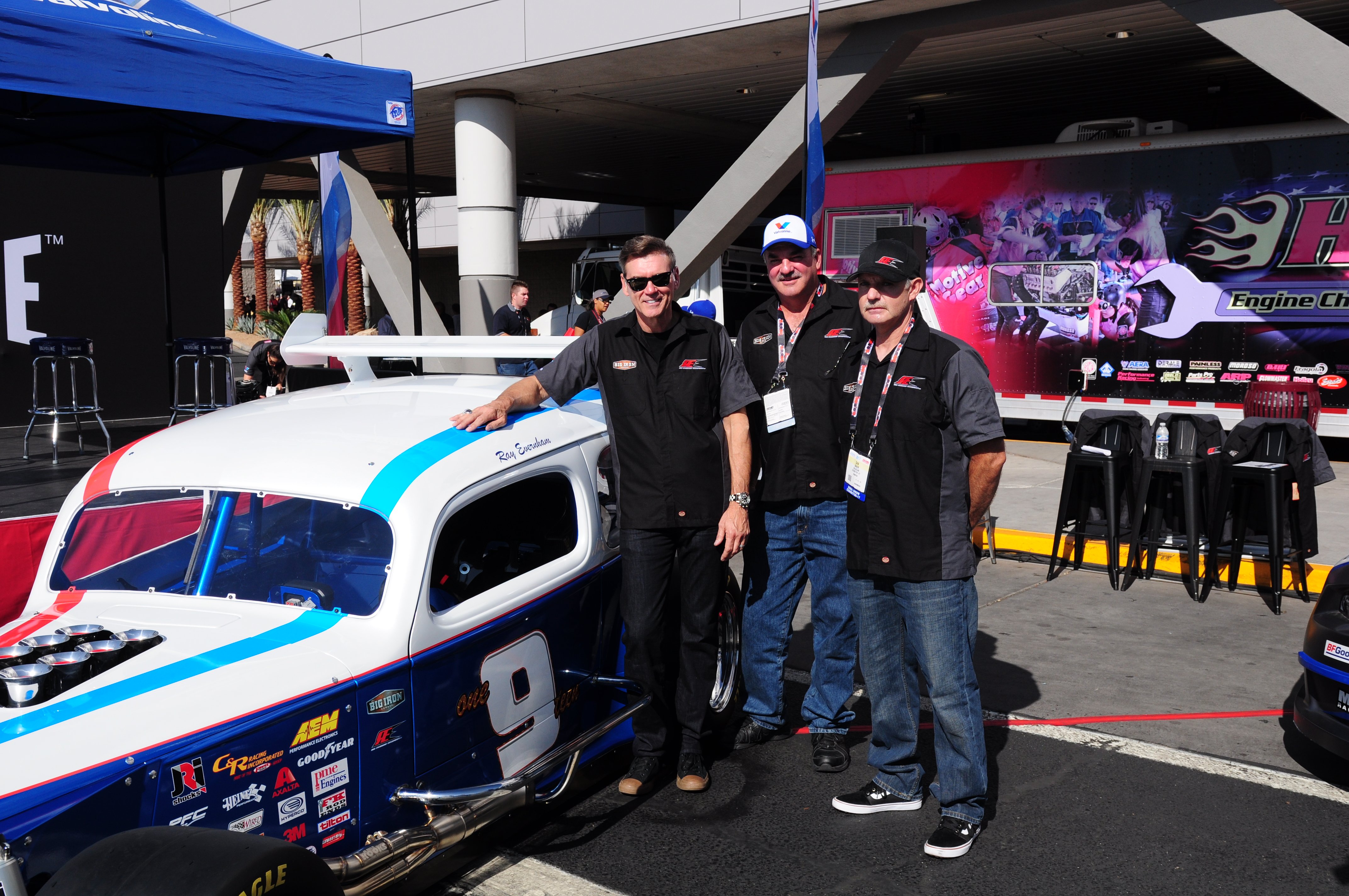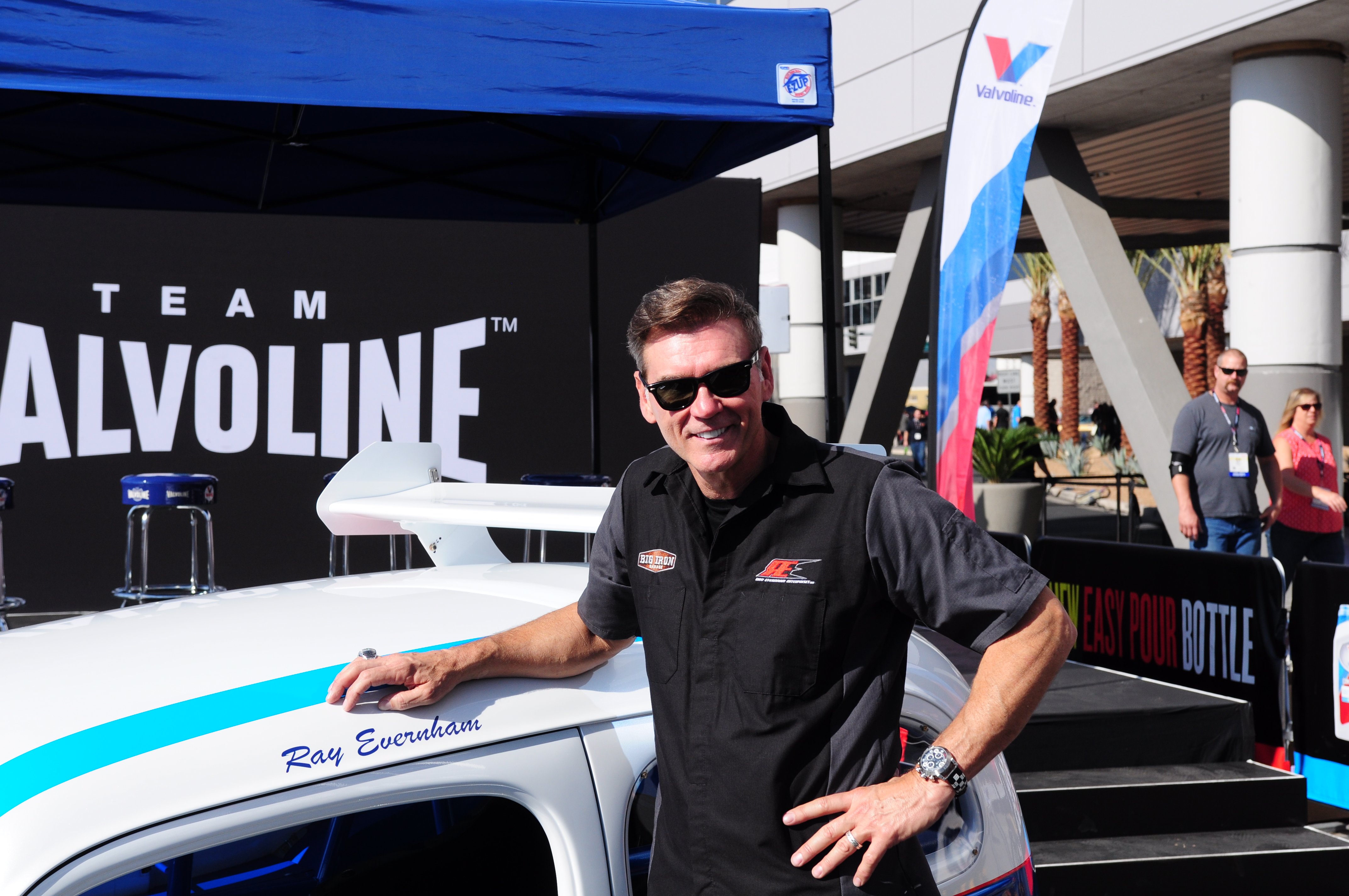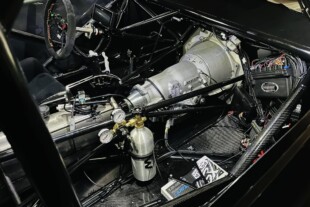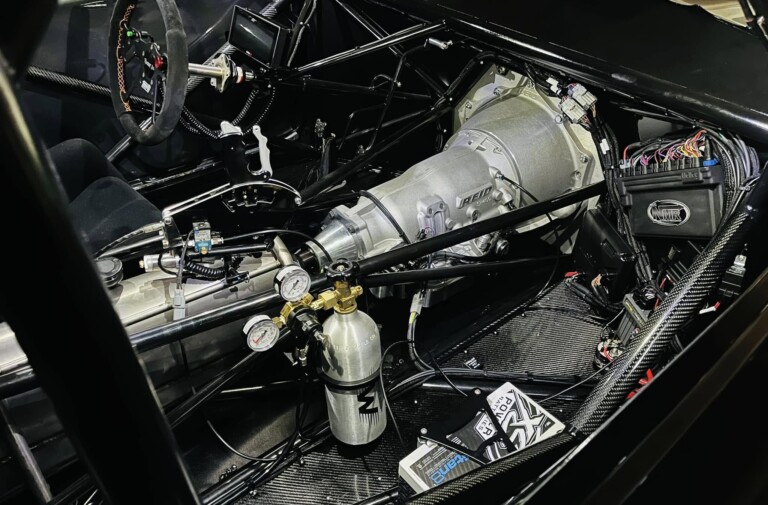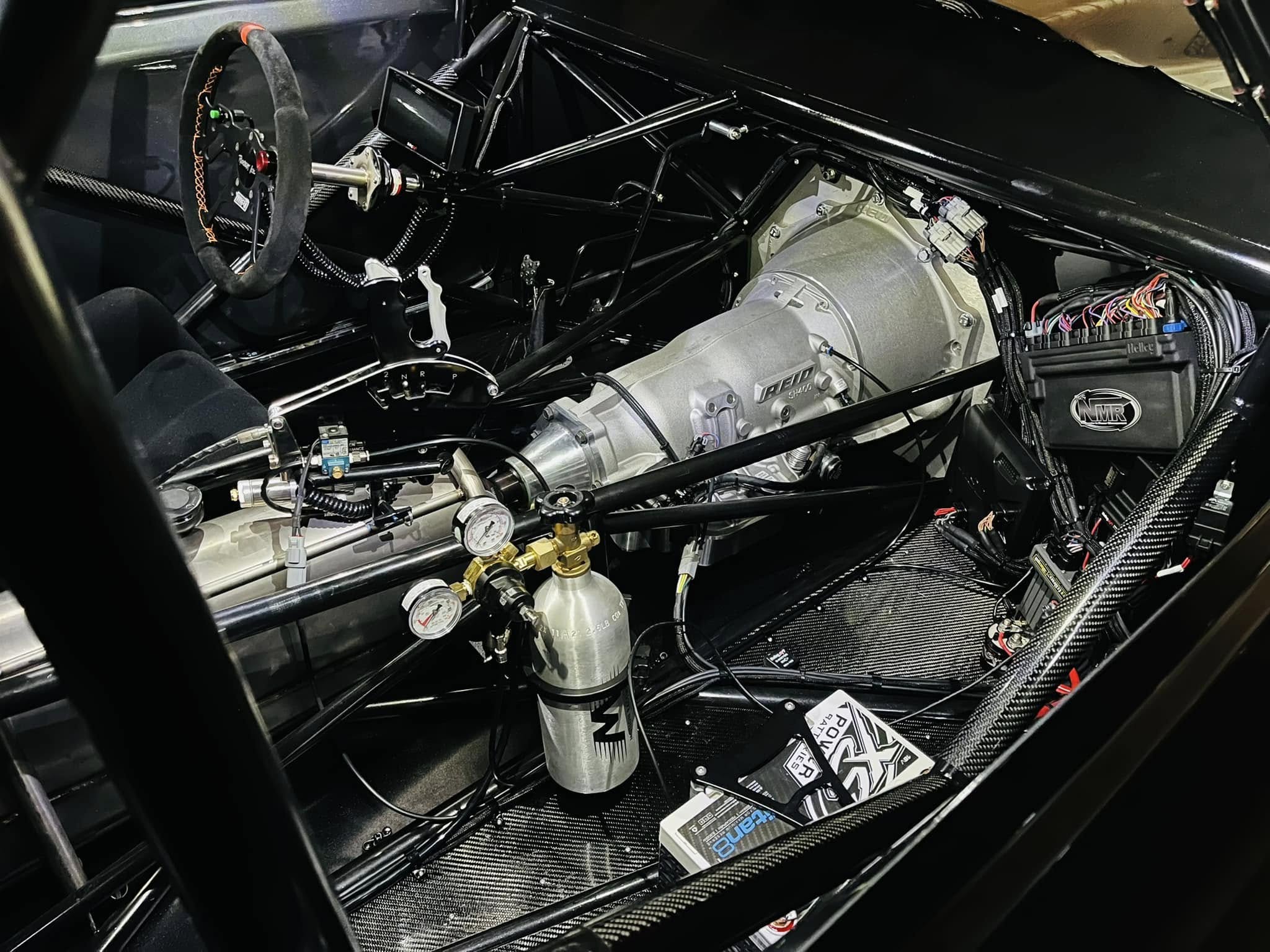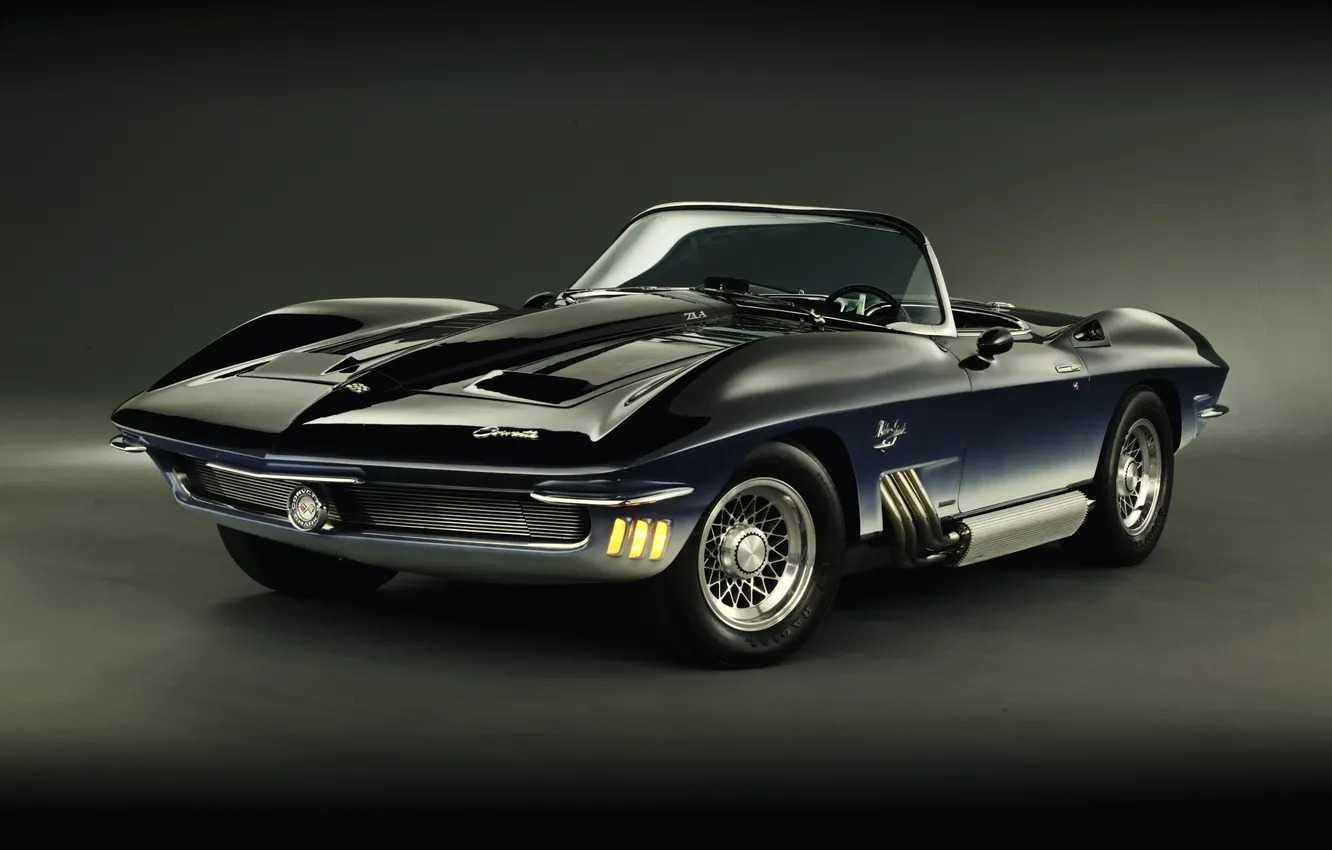An outright win at Pikes Peak requires a modern car with serious backing these days. Reinforced by Romain Dumas’ recent, record-setting victory, a titanic budget, and the support of mega marque like Volkswagen are needed to build and develop a custom-tailored prototype to suit the specific demands of the mountain just outside of Colorado Springs. However, it seems that a class win was available to those with knowledge, gusto, a bit of flair, and, of course, driving ability.
One of those is Ray Evernham, famed NASCAR crew chief and recent NASCAR Hall of Fame inductee. By blending the parts of a current NASCAR Modified car, a bit of a Cup Series car, and a smattering of goodies from a Trans-Am car, then draping the concoction in the skin of a ’36 Chevy, his creation was certainly a head-turner — one with the performance to back up its striking appearance.

Extensive testing at Road Atlanta got the car in shape for Pikes Peak. Photo credit: Ray Evernham
Under the hood, an all-aluminum Chevrolet 410ci SV2 motor — with Kinsler fuel injection and AEM Infinity electronics—makes a smidgen more than 850 hp and 626 lb-ft of torque, which are driven through a Jerico 4-speed. To administer all the NASCAR grunt cleanly and stick to the road through the sinuous, 12.4-mile-long course, they had to add downforce. An IndyCar nose, a sizable splitter, a completely flat underbody (inspired by an ’80s IndyCar), and an enormous diffuser all come together to plant the car squarely through the course’s 156 corners. JRi shocks and Hyperco springs keep the car stable and responsive.
Though the ’36 Chevy’s body was tested and tweaked to make it as aerodynamic as possible, they managed to integrate the aerodynamic package without disrupting the classic aesthetic. It is exaggerated slightly by the hand-shaped fender flares, sharpened nose, and, of course, the chopped top. It’s crafted from steel tubing and an aluminum skin, yet, the car only tips the scales at 2,400 pounds. For that reason, it decelerates astonishingly well — though some of that could be attributed to the massive PFC brakes.
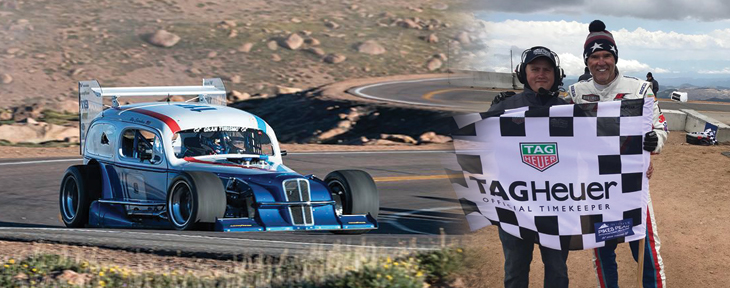
Photo credit: PFC Brakes
Though the demands of Pikes Peak and the typical road course are quite different, Evernham wisely got to grips with the car through extensive testing at Road Atlanta. As evidenced by the footage below, the front end is responsive and the traction is stellar — the latter complements of 36-inch aluminum radius rods and FK Rod Ends with a single-adjustable Neuline torque arm; a front center bearing mounted Watts link; Winters Aluminum Center Section quick-change rearend with a 4:12 ring and pinion; and Wide 5 wheels shod in Goodyear Eagle Racing D1751 tires. For some added traction, the ATL 22-gallon fuel cell full of VP Racing Fuel sits just above the rear axle.
With a Valvoline-inspired red, white, and blue paint scheme, as well as plenty of chrome, the car has an old-school charm and all the performance one could hope for. With a time of 10:11.334, Evernham won the Exhibition class with a bit in his pocket — a testament to the quality of his car and his driving. Plus, few front-runners could say they contended with something quite so loud, so analog, and so cool.
Evernham and his crew at the unveiling of "The Ghost" at the SEMA Show in 2017. Keep an eye on this car, Evernham plans for it to be the ultimate all-around race car.




